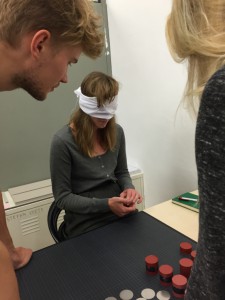Inter-Architecture: Hacking Healthcare by inter-architecture/vu/uva. How can SPATIAL INTERVENTIONS create a better environment for care situations?
An interdisciplinary course from the university of amsterdam & the gerrit rietveld academie department of inter-architecture
see also: http://hackinghealthcare20142015.wordpress.com/
Healthcare faces many major challenges. The ageing population, the impact of chronic diseases on people’s personal life, and the increasing technical opportunities to assist both patient and healthcare professional. Furthermore there is an urge to cut healthcare spending and to improve standards of care. Therefore, a new approach to these complex problems is important.
In order to innovate healthcare practice, not only specialist knowledge of (future) healthcare professionals is required, but also skills such as creative thinking, ability to observe and empathy are of great importance. These are the skills that characterize (future) artists.
Hacking healthcare brings together these future healthcare professionals (students from the faculties of Psychology and Medicine) and artists (students from the Gerrit Rietveld Academie inter-architecture) aiming to develop innovative solutions to concrete challenges in healthcare. Participants will be trained in social design skills and creativity by teachers of the Gerrit Rietveld Academie and the innovation lab of the Rijksmuseum National Museum. Teachers from the academic and healthcare fields will introduce today’s challenges in healthcare.
In interdisciplinary groups you will work on solution for a concrete case in a healthcare institution (e.g. psychiatric hospital, general practitioner or a pharmaceutical company; final cases will be published on the IIS website) using Stanford’s design thinking methods *. Students will go through the different phases of design thinking in order to structure the process of innovation. Observation and participating in the context you design for is essential in this process. Groups will be facilitated in this collaboration of art and research.
Stanford University’s design thinking is a method originally developed for product design. However, this mentality has become intertwined with multiple non-design courses in America’s top universities and World’s most innovative companies. This method enables radical innovation with the collaboration of people from diverse backgrounds, securing the connection with the final users (e.g. patients, family or healthcare providers).
COURSE OBJECTIVES
to understand and apply methods of design to societal problems (social design); to be introduced to the context of Dutch healthcare through personal interaction with patients, healthcare providers and regulators; to experiment with art and research collaboration, and to reflect on it; how can different disciplines work together on innovative solutions?

